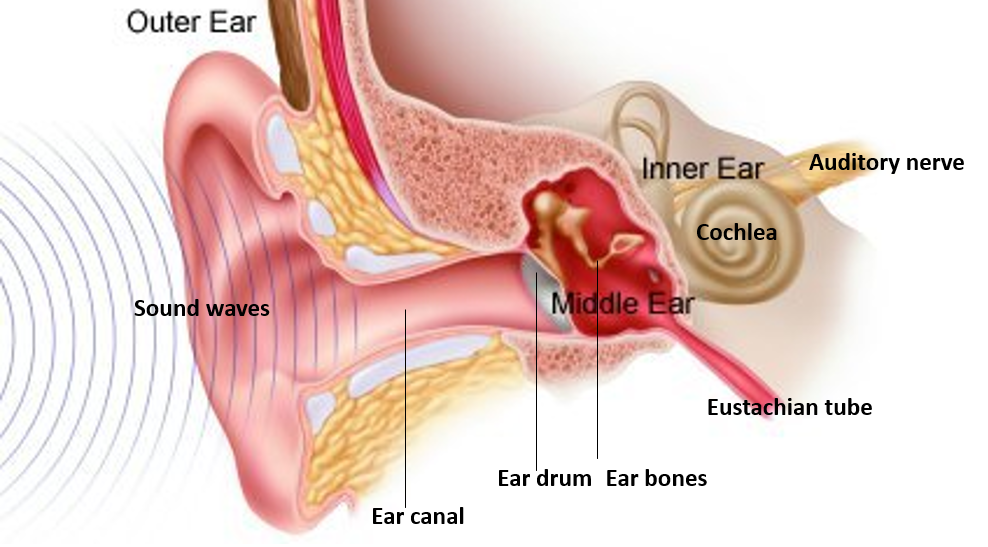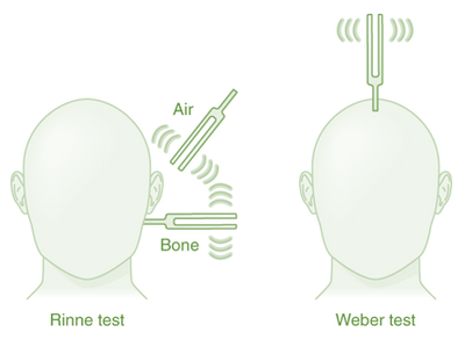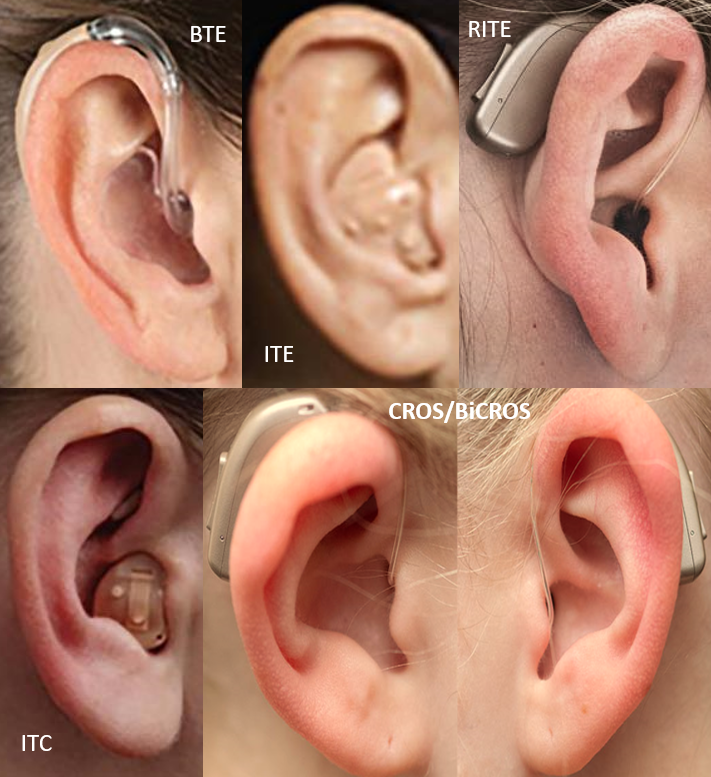Hearing Loss is a common problem.
DEFINITION
Hearing loss (HL) is defined as not being able to hear as well as someone with normal hearing (hearing thresholds of 20 dB or better in both ears). Hearing loss may be mild, moderate, severe or profound. It can affect one ear or both ears and leads to difficulty in hearing conversational speech and other sounds.
Deafness refers to people with profound hearing loss, and very little or no hearing, who often use sign language or text mode for communication.
Hearing loss affects people of all ages but increases commonly with age. People over age 50 may experience gradual hearing loss over the years due to age-related changes in the ear or auditory nerve. The medical term for age-related hearing loss is presbycusis.

TYPES AND CAUSES
The three basic categories of hearing loss are sensorineural hearing loss, conductive hearing loss, and mixed hearing loss.
Sensorineural Hearing Loss
This type of hearing loss occurs when the inner ear or the actual hearing (auditory) nerve or organ (cochlea) itself becomes damaged. This loss generally occurs when hair cells within the cochlea are damaged.
Sensorineural loss is the more common type of hearing loss. It can be a result of aging, exposure to loud noise, head injury, inner ear diseases or infections, certain drugs, auditory tumor (acoustic neuroma) or a genetically inherited condition.
Sudden sensorineural hearing loss should be medically evaluated immediately. Surgery or targeted radiation can be used to remove an acoustic neuroma, which is effective, but hearing recovery is highly variable, and usually, a cochlear implant is needed. Gradual sensorineural hearing loss over time is typically not medically or surgically treatable, but are managed with hearing aids.
Conductive Hearing Loss
This type of hearing loss occurs in the conducting pathway (outer or middle ear) where sound waves are not able to travel and reach the inner ear.
This may occur due to earwax blockage, foreign objects in the ear canal, or rupture of the ear drum. It can also occur in middle ear infections (otitis media) due to the presence of fluid/pus. These conditions are usually medical or surgically treatable by wax or foreign body removal, eardrum repair (tympanoplasty), and anti-infective medications.
Sometimes an abnormality of the 3 ear bones (ear ossicles) may cause conductive hearing loss as seen in a condition called otosclerosis. This can be corrected by a surgery known as a stapedectomy, where a prosthetic device is inserted into the middle ear to bypass the abnormal bone and permit sound waves to travel to the inner ear directly.
Mixed Hearing Loss
Sometimes people can have a combination of both sensorineural and conductive hearing loss, as seen in head injury, ear infections, and some genetic conditions (syndromes).
TESTS FOR HEARING LOSS
Tuning fork tests (Rinne and Weber tests)
These are non-invasive in-clinic simple tests that help to differentiate between conductive and sensorineural hearing loss.
Rinne and Weber test both use 512-Hz tuning forks to test how you respond to sounds and vibrations near your ears.
RINNE TEST
A Rinne test evaluates hearing loss by comparing air conduction to bone conduction. Air conduction hearing occurs through air near the ear, and it involves the ear canal and eardrum. Bone conduction hearing occurs through vibrations picked up by the ear’s specialized nervous system.
The doctor strikes a tuning fork and places it on the mastoid bone behind one ear. When one can no longer hear the sound, the doctor moves the tuning fork next to the ear canal. If one can still hear the sound, the doctor records the length of time one continues hearing the sound after the shift.
Normal hearing will show an air conduction time (AC) that is twice as long as the bone conduction time (BC), so one will hear the sound next to the ear canal approximately twice as long as one hears the sound behind the ear. In conductive hearing loss, bone conduction is heard longer than the air conduction sound (BC>AC). In sensorineural hearing loss, air conduction is heard longer than bone conduction (AC>BC), but may not be twice as long as seen normally.
WEBER TEST
A Weber test is another way to evaluate conductive and sensorineural hearing losses. The doctor strikes a tuning fork and places it on the middle of the head, and the patient indicates where the sound is best heard: the left ear, the right ear, or both equally.
Normal hearing will produce equal sound in both ears, while conductive loss will cause the sound to be heard best in the abnormal ear, while sensorineural loss will cause the sound to be heard best in the normal ear.



Audiometry
There are different types of audiometry tests, some of the main ones being mentioned below:
CONDUCTION TESTS
Pure–Tone Audiometry (Air Conduction Test): This is the most common hearing test done with pair of headphones or speakers for sounds to go through your outer and middle ear to assess sound conduction of different frequencies to ascertain the auditory sensitivity.
Bone Conduction Audiometry: A small device is placed behind the ear or on the forehead, and gentle vibrations are sent through the bone directly to the inner ear to determine hearing sensitivity, and localize problem either to inner ear or to the outer/middle ear.
Speech Audiometry and Speech recognition tests: This test helps to assess the auditory system by evaluating the hearing ability especially of speech and conversation. An audiologist talks through a pair of headphones and the listener has to repeat the spoken words. This can be done at
Self – Recording Audiometry: This is where the listener gets to control the increase and decrease of the intensity as the frequency is gradually changed back and forth across the threshold of hearing. This can be done manually or by a computer microprocessor.
INNER EAR AND NERVE FUNCTION TESTS
Electrocochleography (ECog): Measures the electrical activity in the inner ear, generated by the cochlea and vestibulocochlear nerve in response to sound.
Auditory Brainstem Response (ABR) / Auditory Evoked Potential (AEP): This test checks the hearing nerves and hearing center in the brain and determines if one has sensorineural hearing loss. Electrodes are placed on the head and connected to a computer. With the use of headphones, responses to the sounds one hears are recorded by one’s brain wave activity.
Otoacoustic Emissions (OAEs): This is where sounds produced in the inner ear are detected. The vibrations from the inner ear produce a very quiet sound that echoes back into the middle ear, which is how we measure OAEs. However, hearing loss greater than 25-30 decibels (dB0) will not be able to produce these soft sounds. This test is done with earphones that emit sounds and measures the sound that comes back. This helps determine if there is a blockage in the ear canal, a buildup of fluid in the middle ear, or if there is damage to the cochlear hair cells.
TESTS FOR EAR DRUM AND MIDDLE EAR FUNCTION
Tympanometry: This test measures the movement in the eardrum caused by air pressure. This helps determine if there is excess fluid, a buildup of wax, eardrum perforations, or tumors. A small probe is placed into each ear, and air is pushed in and a graph recording taken that shows the movement of the eardrum. It can identify a stiff, floppy or perforated eardrum. Another similar test to tympanometry, measures acoustic reflexes to sound like tightening of middle ear muscles.
Impedance tests: The measurement of mobility and air pressure of the middle ear system, Eustachian tubes and its reflexes are tested that may be affected by fluid/blockages.
GRADING HEARING LOSS
This is done by assessing the audiometric decibel hearing loss as recommended by the International Standards Organization (ISO) and WHO-proposed grades of hearing impairment and presumed functional consequences, as averages of values at 500, 1000, 2000, and 4000 Hz frequencies for the better ear.
- Grade 0 – No impairment (>20dB) mplies no or very slight/insignificant hearing problem, and can even hear whispers.
- Grade 1 – Mild Impairment (20-34dB) implies difficulty in hearing conversations amidst noisy but not quiet background.
- Grade 2 – Moderate Impairment (35-49dB) implies little difficulty in quiet hearing of a normal voice but difficulty with conversation in noise
- Grade 3 – Moderately Severe (50-64dB) implies difficulty in quiet hearing of a normal voice (needs louder speech) and significant difficulty with conversation in noise.
- Grade 4 – Severe (65-79dB) implies that in quiet, one can hear loud speech if directly in one’s ear, and in noise, one has very great difficulty even with that.
- Grade 5 – Profound (80dB+) implies the inability to hear and understand even a shouting voice whether in quiet or noise.
HEARING AIDS
Hearing aids have greatly helped to manage hearing loss. They require getting used to, lifestyle adjustments, as well as comfort and economic considerations.
There are 5 types of hearing aids:
- Behind-the-ear (BTE) is suitable for most people with mild to profound hearing loss but requires manual dexterity due to multiple parts.
- In-the-ear (ITE) devices fill either the entire ear (known as full-shell) or a portion of the bowl (known as half-shell) of your ear. These are best for people with moderate to severe hearing loss who may have dexterity issues or difficulty handling small items.
- Receiver-in-the-ear (RITE) is similar to BTE but offer a more natural sound.
- In-the-canal (ITC) devices or sometimes completely-in-the-canal (CIC) hearing aids fit more deeply into the ear canal than ITE hearing aids, so they are less visible. But their smaller size and batteries make them more difficult to handle.
- Contralateral Routing of Signals or Bilateral Contralateral Routing of Signals (CROS/BiCROS) hearing aids are recommended when one has normal/minimal hearing loss in one ear and profound loss in the other ear. The hearing aid is worn on the better ear and an additional microphone on the poorer hearing ear to allow one to hear from the poorer side in addition especially useful when someone is talking on the side of the poorer ear.



Also read:
Reference – WHO HL

